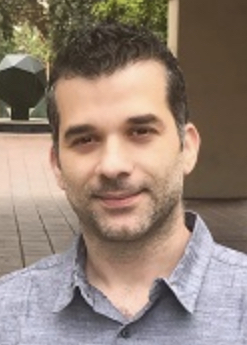Fall 2019 Joint CSC@USC/CommNetS-MHI Seminar Series
 |
Vasileios Christopoulos,
University of California, Riverside
|
Abstract
The ability to select between competing options while acting, and learning to adapt to new situations, underlies our impressive capabilities of playing soccer, flying aircrafts and skiing on the Olympics. Although significant progress has been made on understanding the mechanisms underpinning decision-making and learning, there is no strong consensus on how the brain chooses between actions and adapts to new environmental conditions. I will discuss recent findings from our lab providing evidence that decision-making is not a centralized cognitive process that resides solely within the frontal lobe. Instead, it also includes brain areas that have been traditionally associated with planning and generating actions. By modeling the decision-making process within a neurodynamical framework, I will present an alternative hypothesis according to which decisions emerge via a continuous competition between multiple potential actions. To select between actions, the brain needs an accurate representation of the state of the body and the environment it is in. Despite the sophistication of our sensory system, it is unlikely to extract a complete and accurate representation of the state due to noise and long sensory delays. To avoid instabilities due to these factors, previous work has suggested that the brain builds internal models that predict sensory outcome of motor actions. These predictions are integrated with the incoming sensory feedback to update the estimate of the current state. By recording neural activity from the posterior parietal cortex (PPC) in both humans and non-human primates, I will show that PPC contains an adaptive internal forward model that learns to compensate for delayed visual feedback. I will also discuss clinical brain-machine interface (BMI) studies in human with tetraplegia that have taken steps to elucidate the mechanisms behind acquisition of new skills and why learning new skills is easier when they are related to already learned abilities. By training a participant to control a computer cursor by modulating the neural activity of PPC neurons, we found that some patterns of activity were generated more easily than others. The easier-to-learn patterns of activity were combinations of pre-existing neuronal patterns, whereas the difficult-to-learn activity patterns were different from the neuronal patterns that the participant had experienced in the past. Importantly, there were neuronal patterns that PPC could not generate indicating that neuroplasticity in learning is constrained by the pre-existing structure of the brain. This fundamental constraint may explain why learning novel tasks can be challenging.
Biosketch
Dr. Christopoulos is an Assistant Professor at the Bioengineering department at the University of California Riverside. He received his Ph.D. in Computer Science and Engineering (with minor in Cognitive Sciences) from the University of Minnesota, Minneapolis in 2010. He then moved to California Institute of Technology (Caltech) to work as a post-doctoral fellow at the Andersen’s lab. In 2017, he was appointed as Research Faculty at the Division of Biology and Biological Engineering at Caltech and Director of Neurotechnology at the T&C Chen Brain-Machine Interface Center. Dr. Christopoulos’ research group uses neurophysiological, functional brain-imaging and computational methods to elucidate the mechanisms underlying decision-making, motor learning and spatial awareness, and explore circuit dysfunctions in neurological and psychiatric disorders. In the recent years, Dr. Christopoulos extended his research to clinical trials including neural prosthetic applications in individuals with tetraplegia (intracortical Brain Machine Interface), and deep brain stimulation (DBS) in Parkinson's disease (PD) patients.
